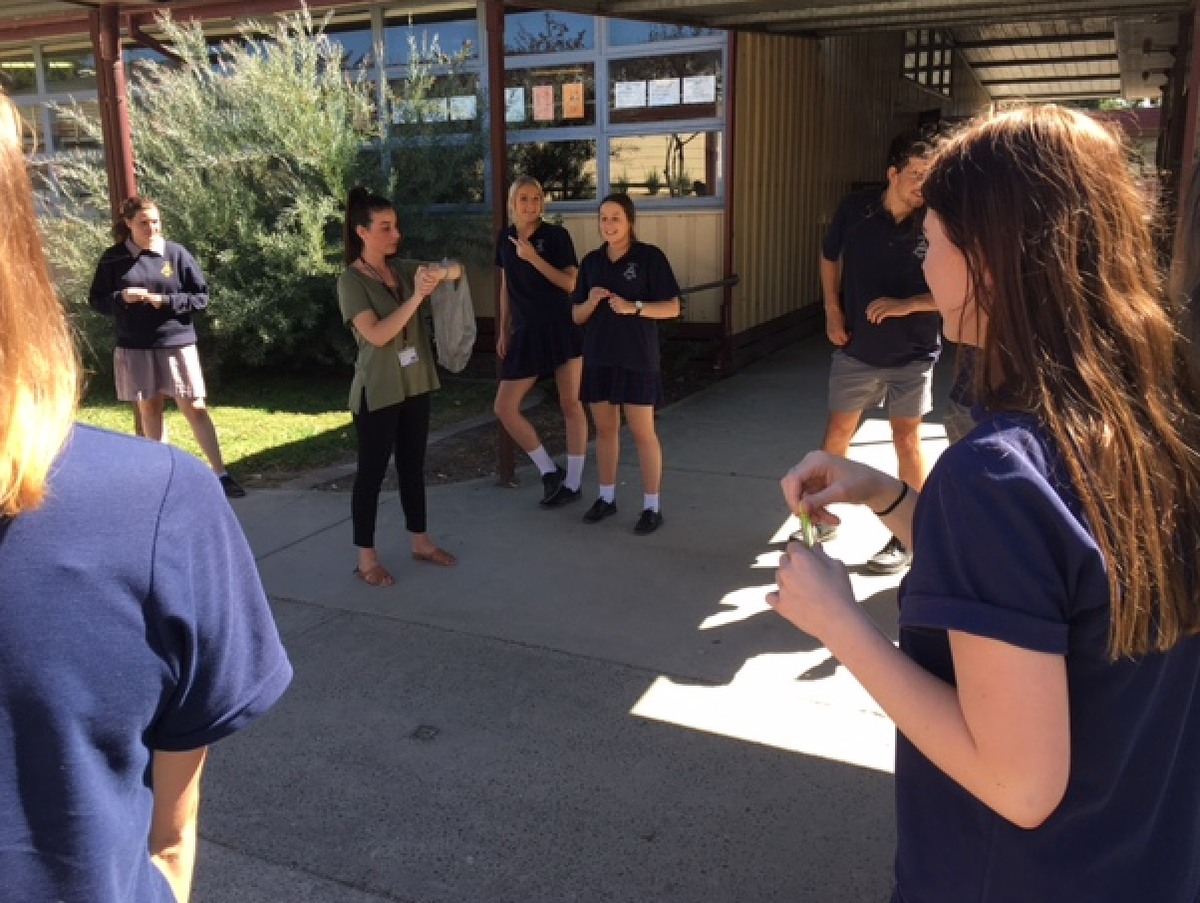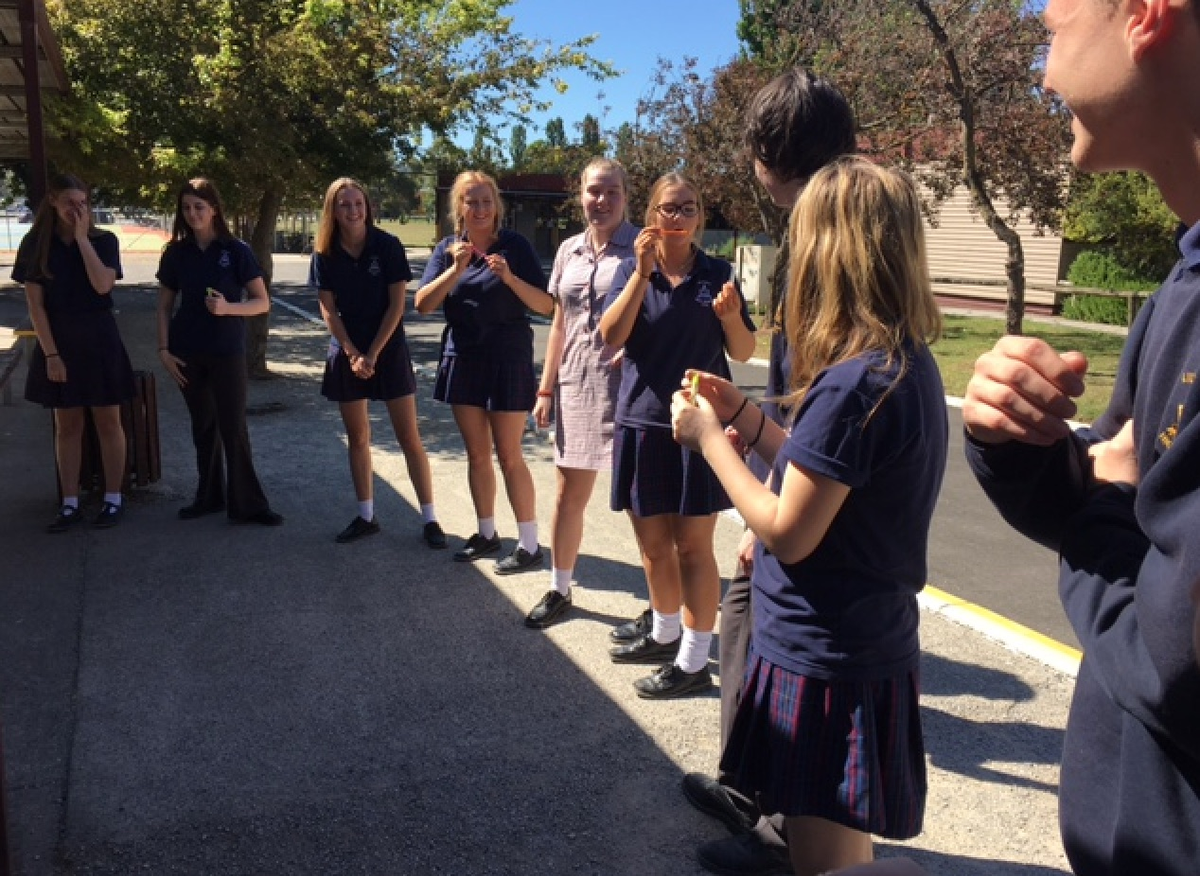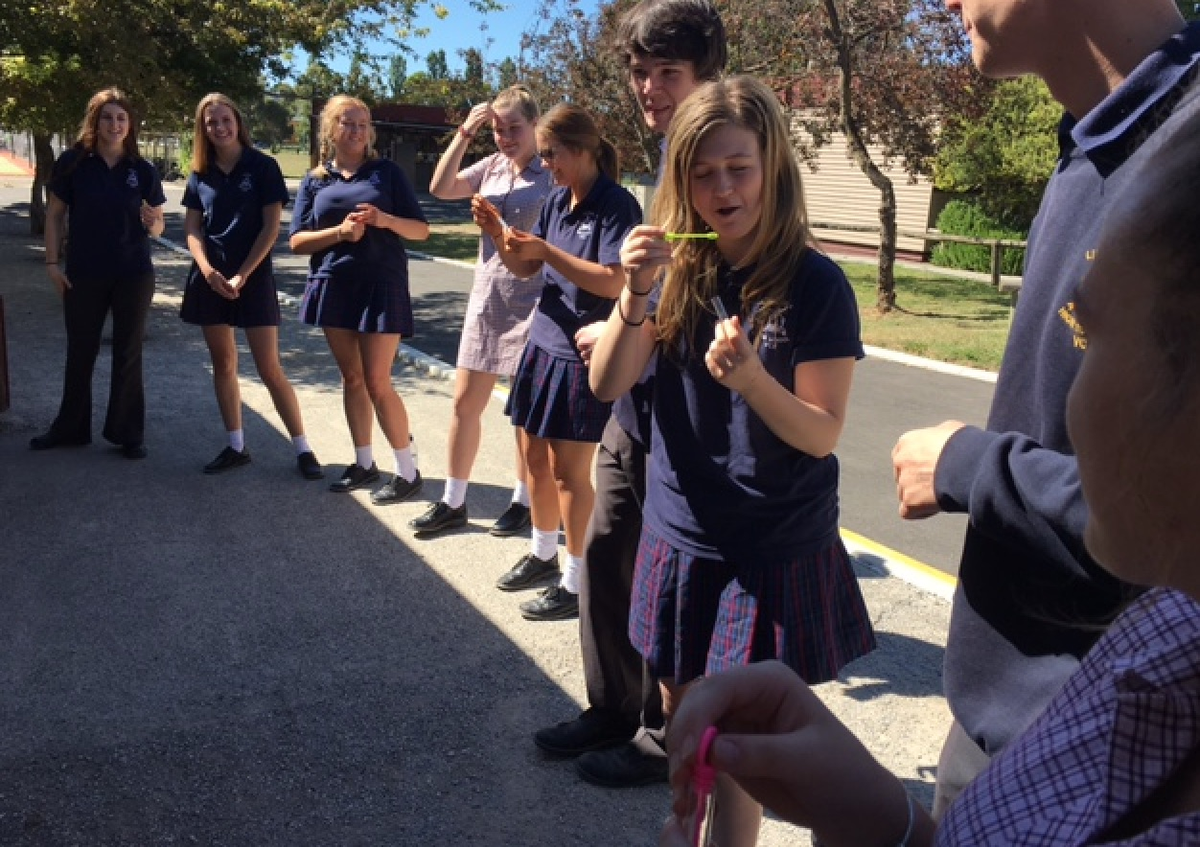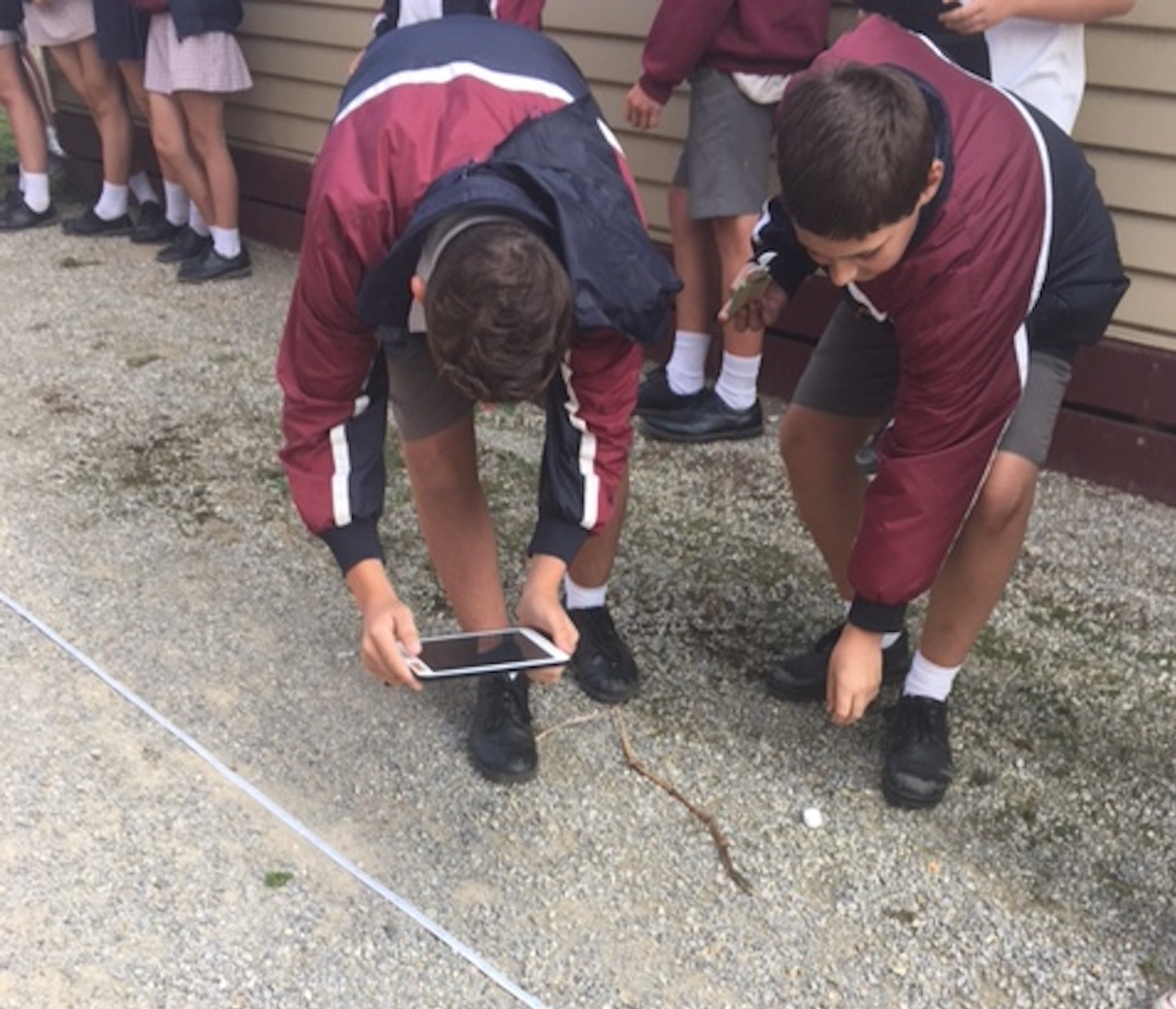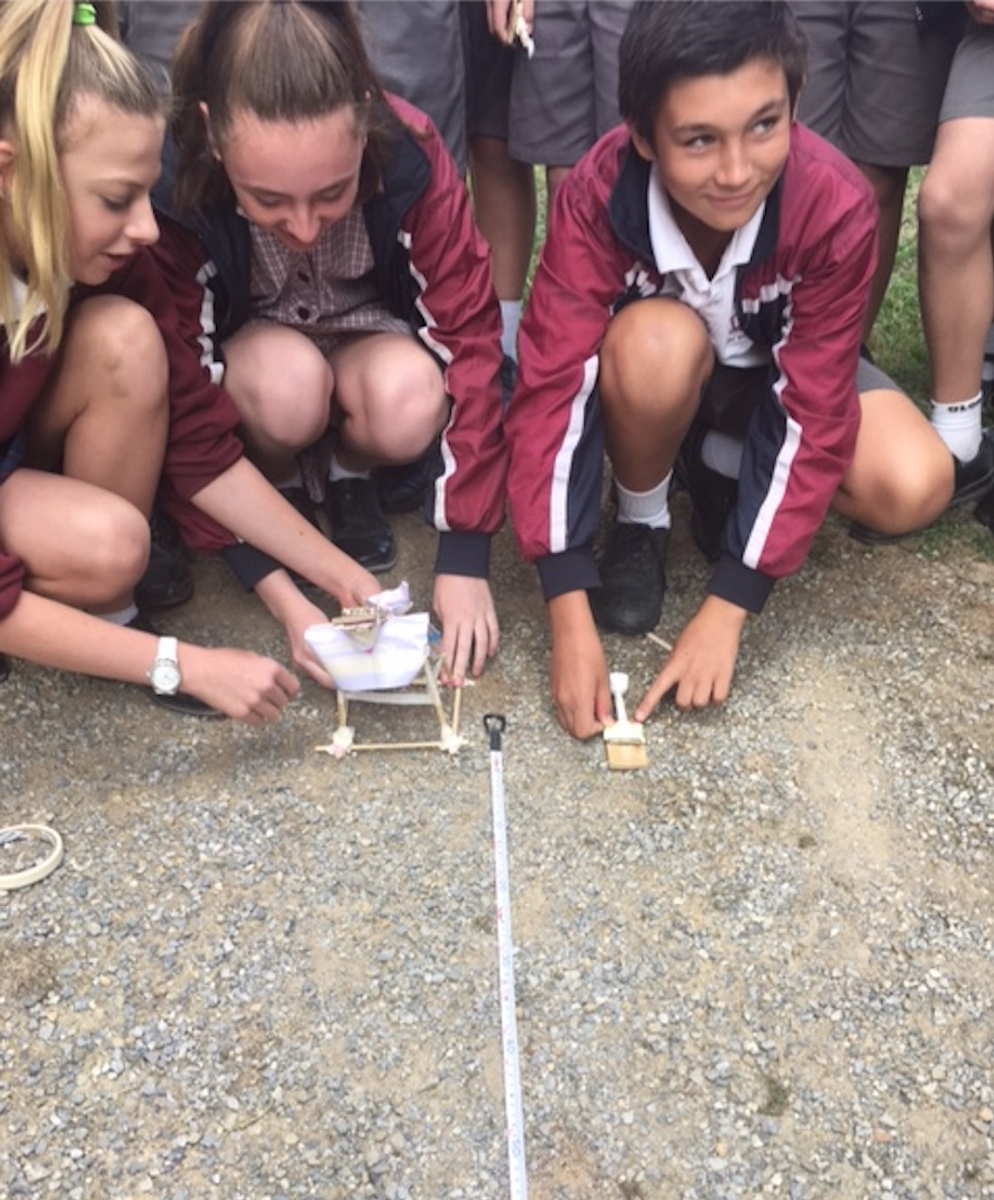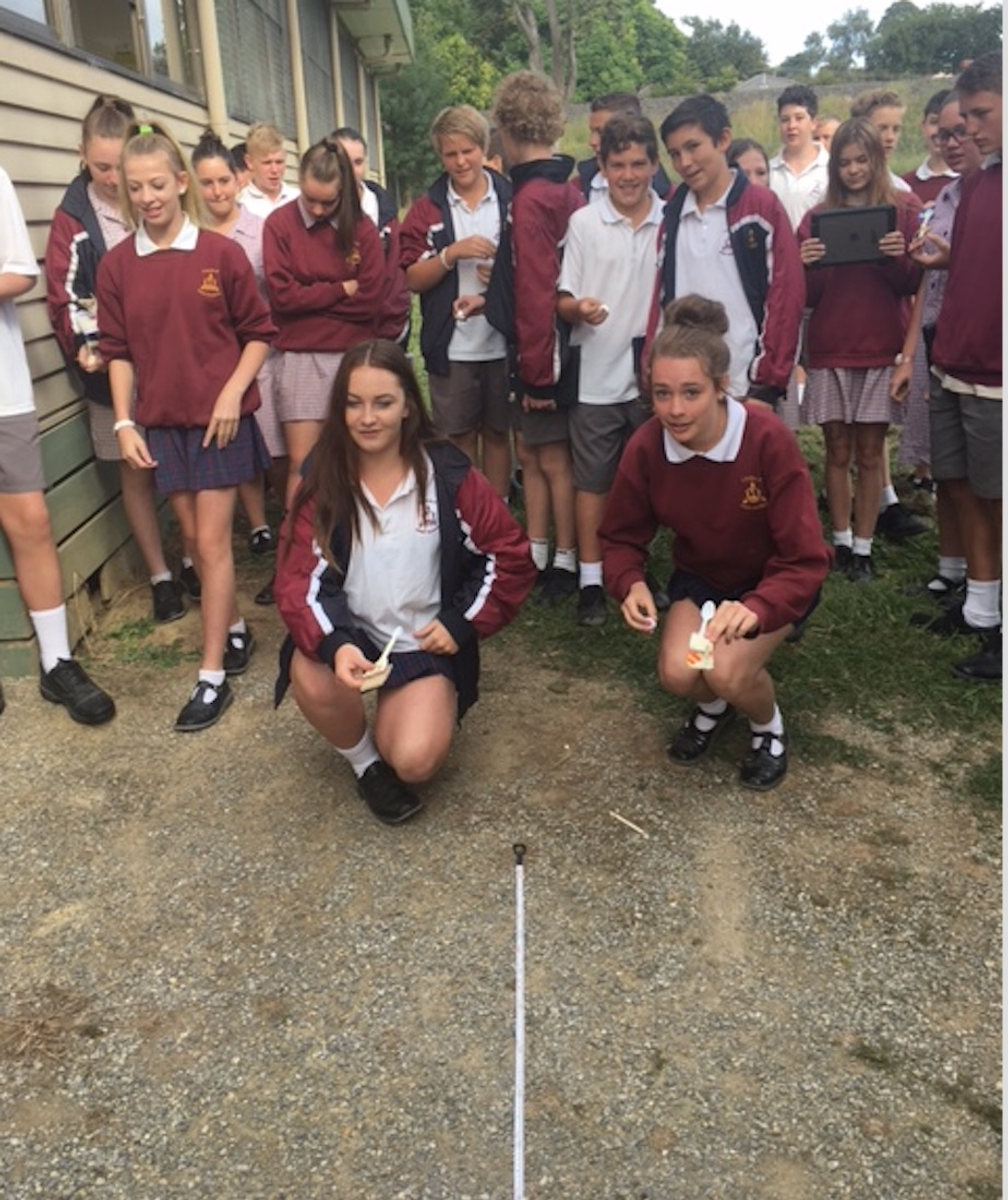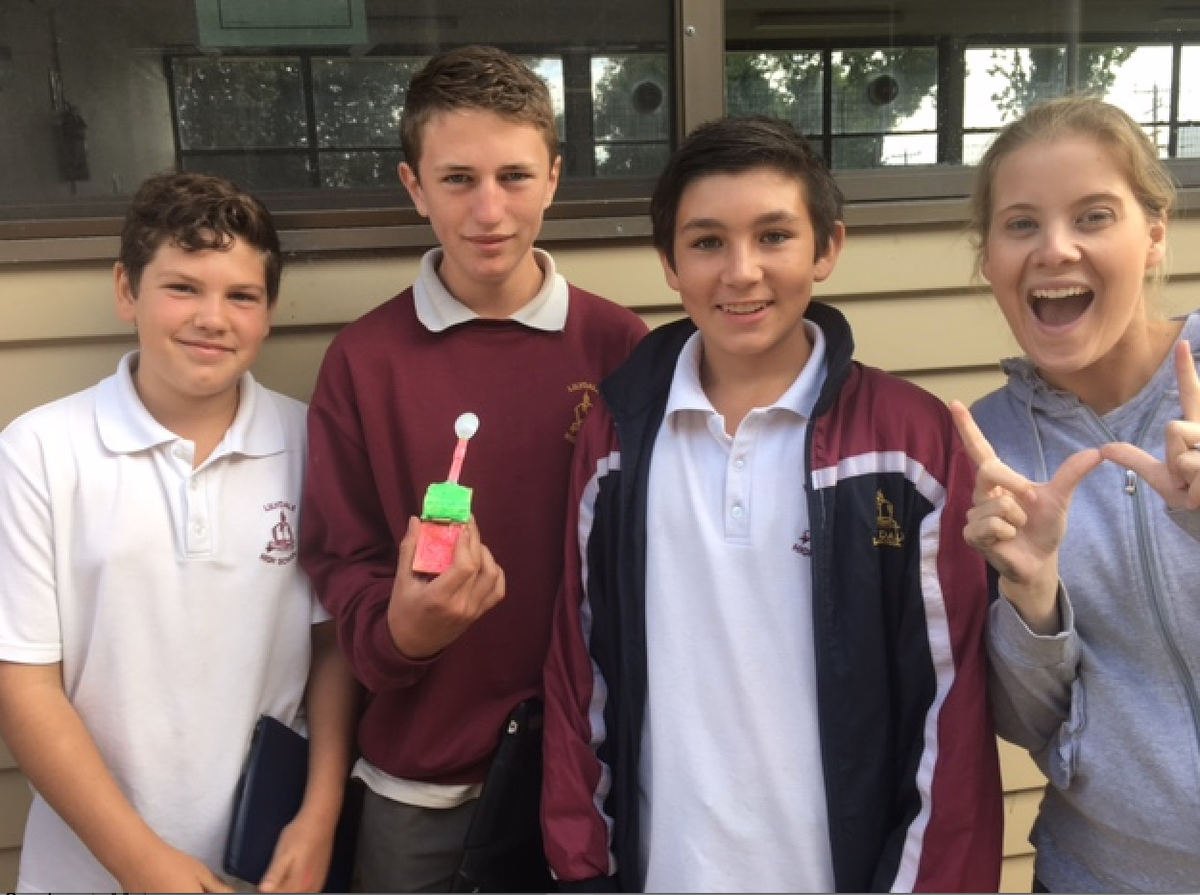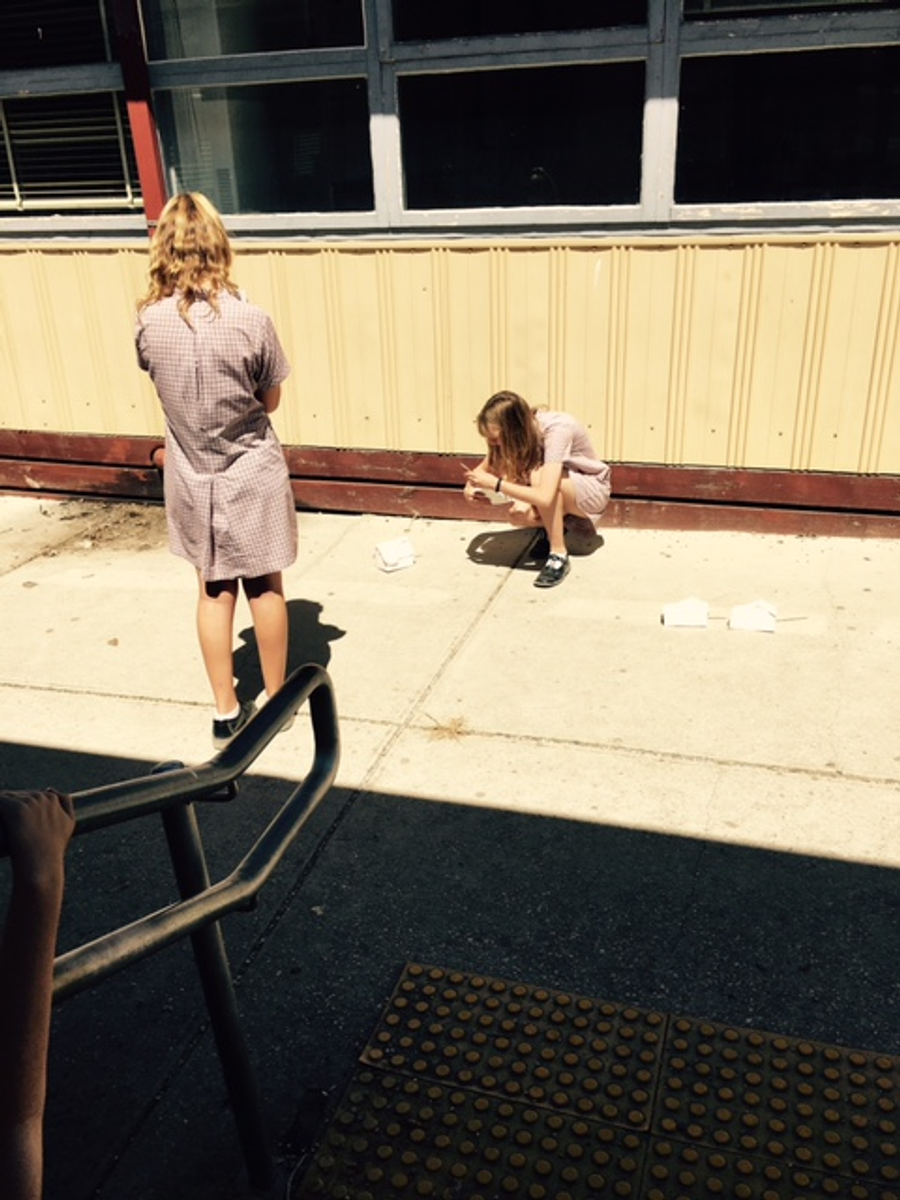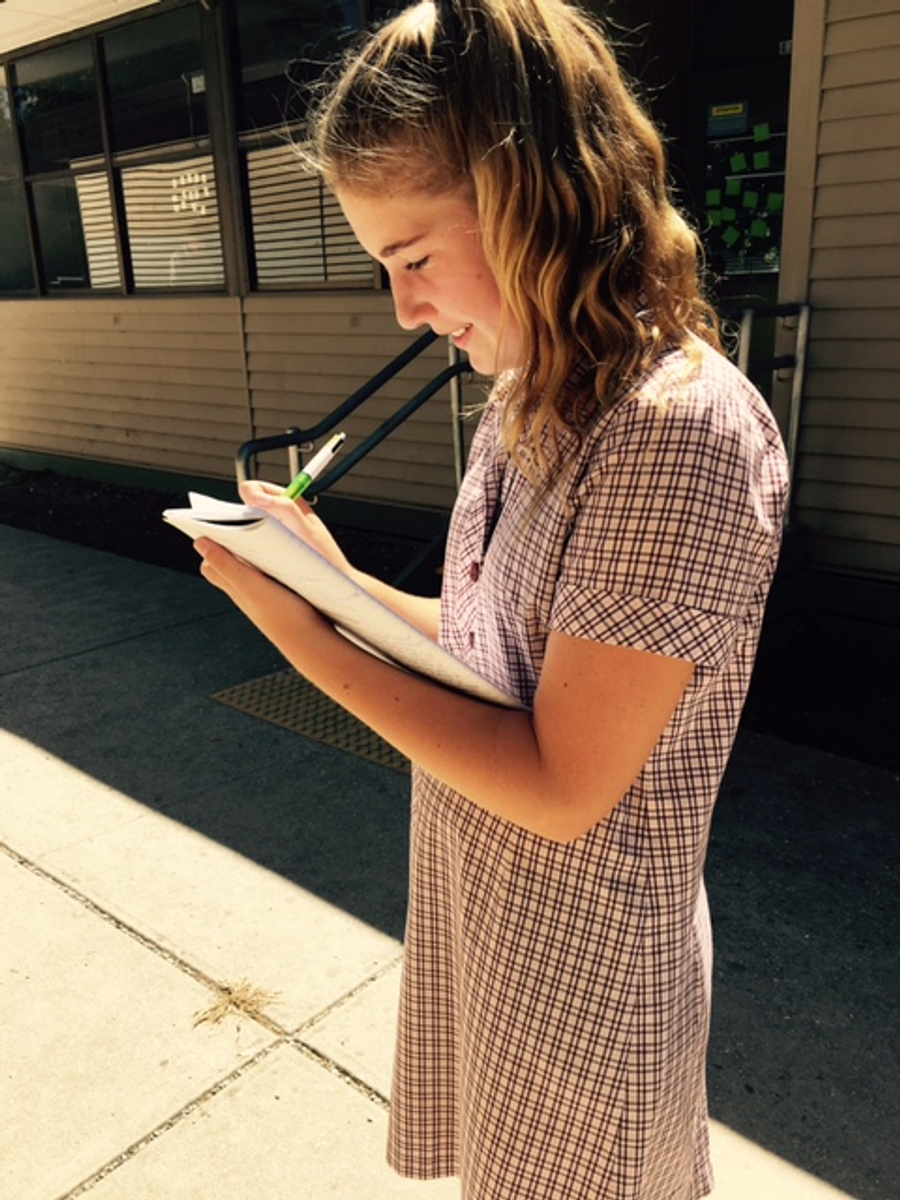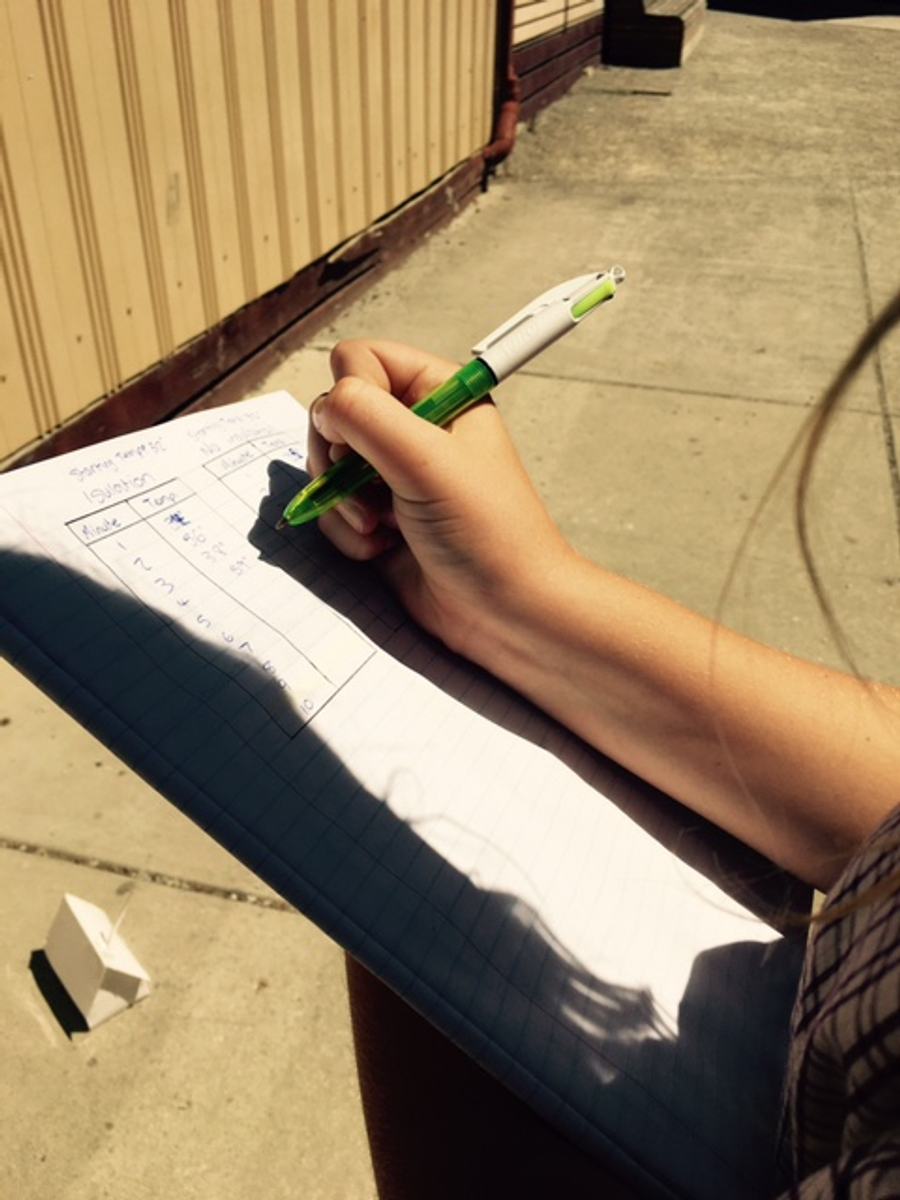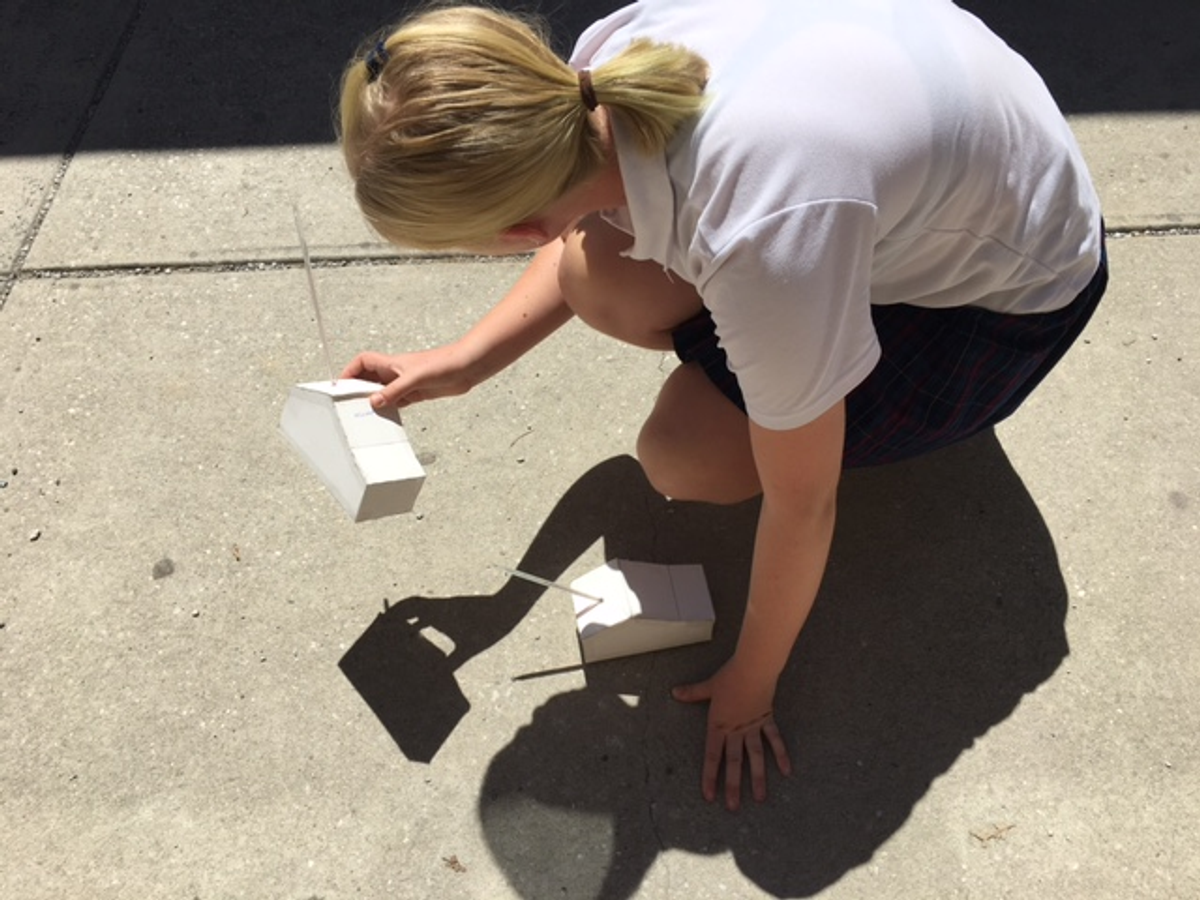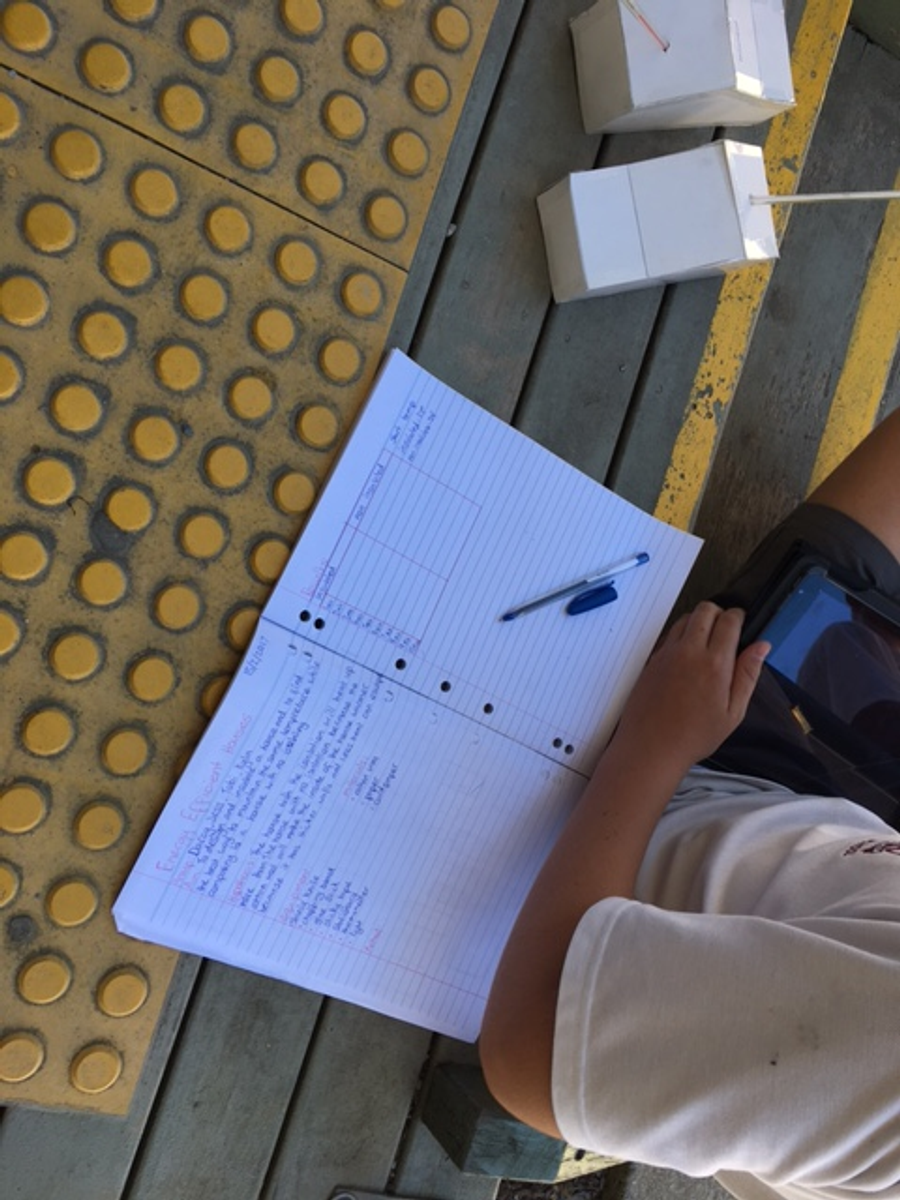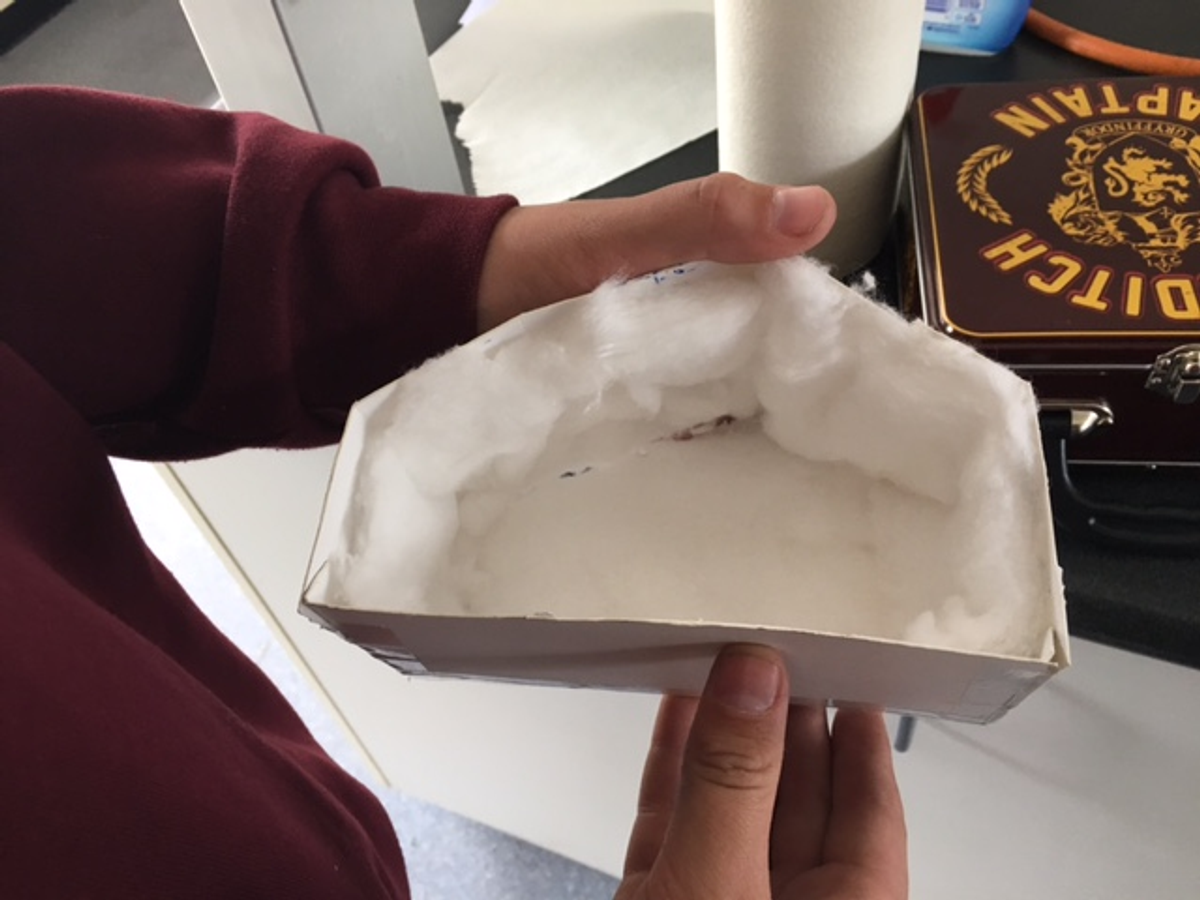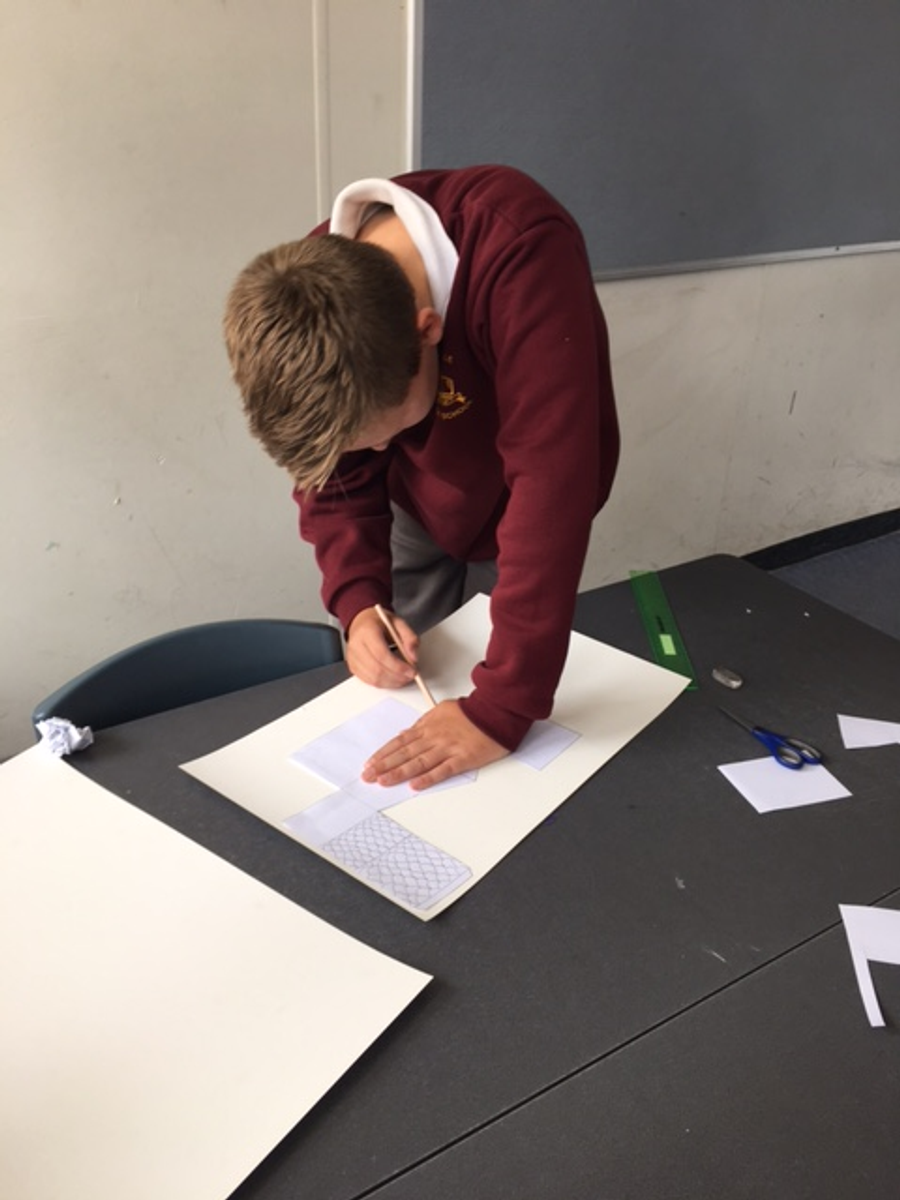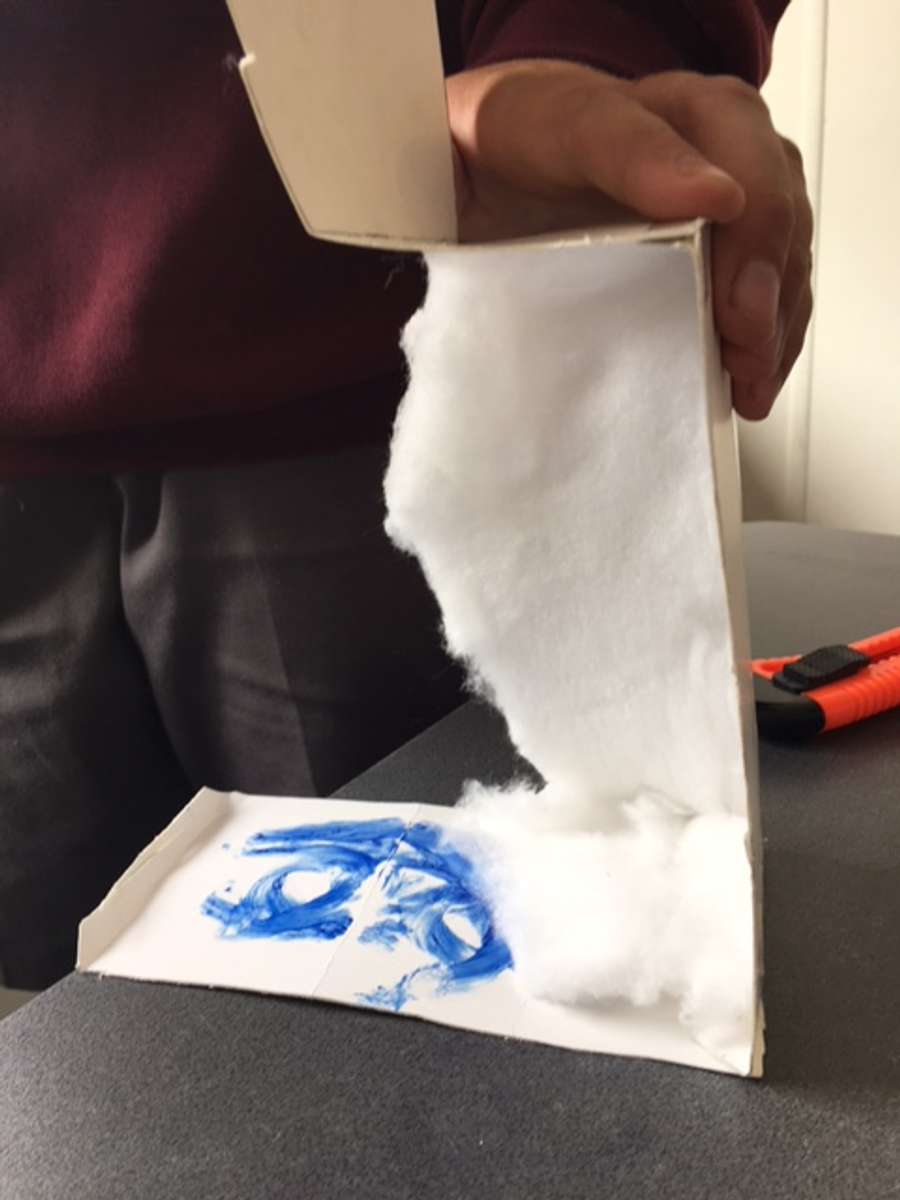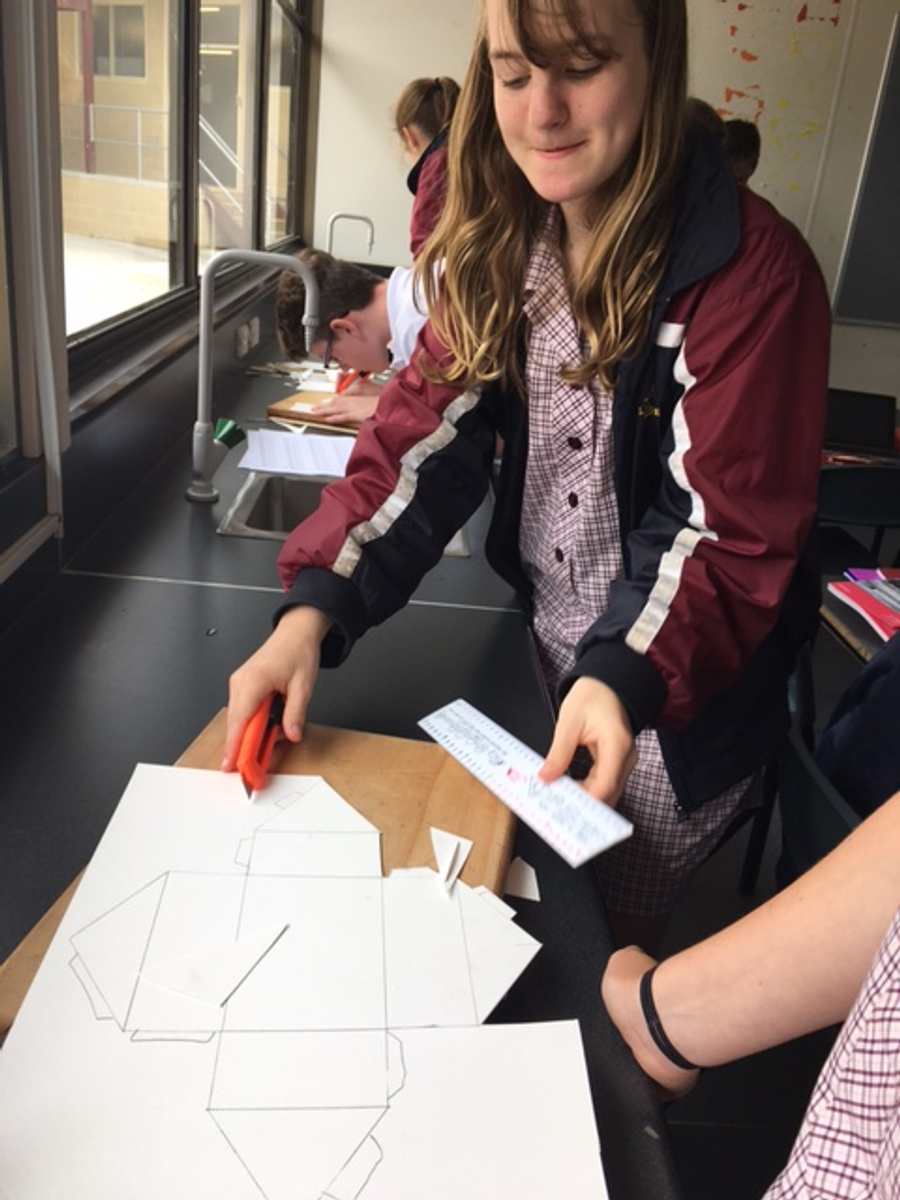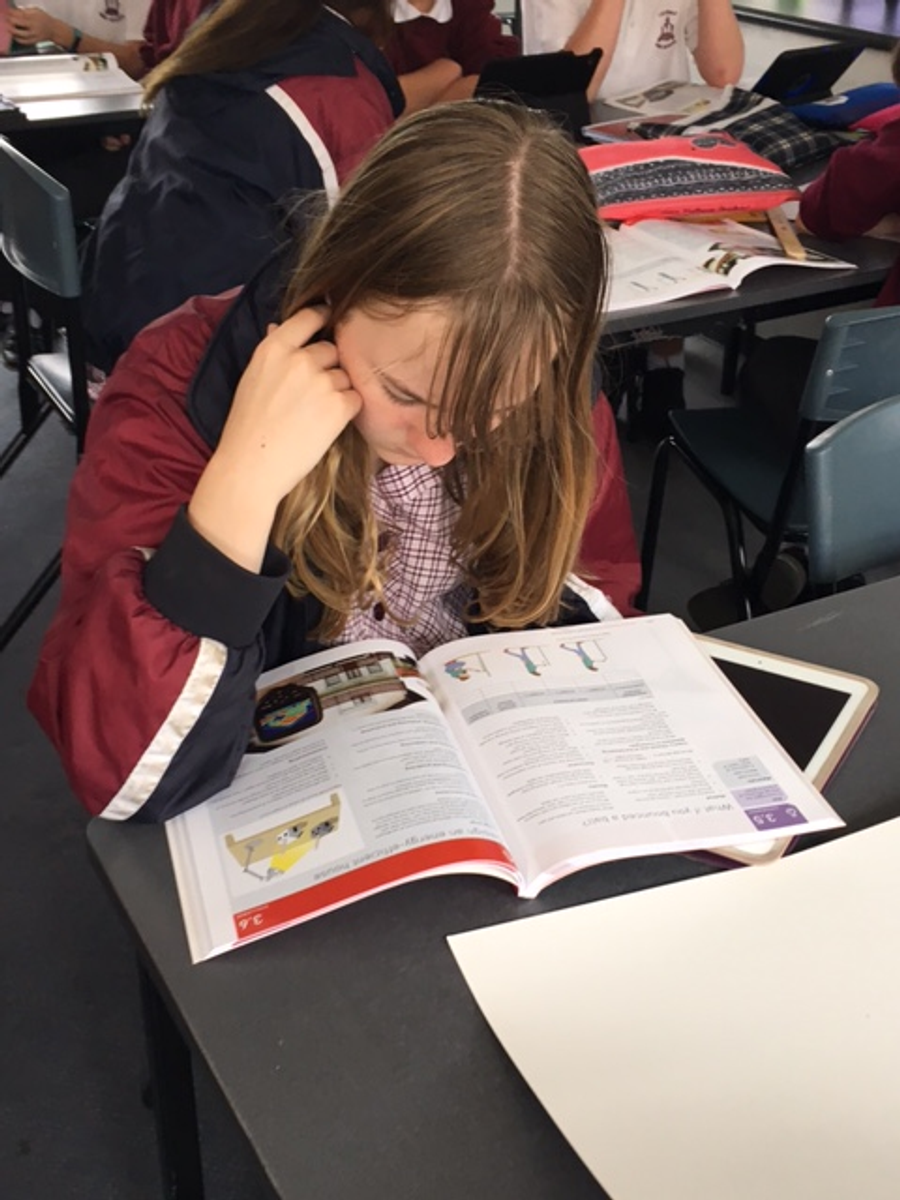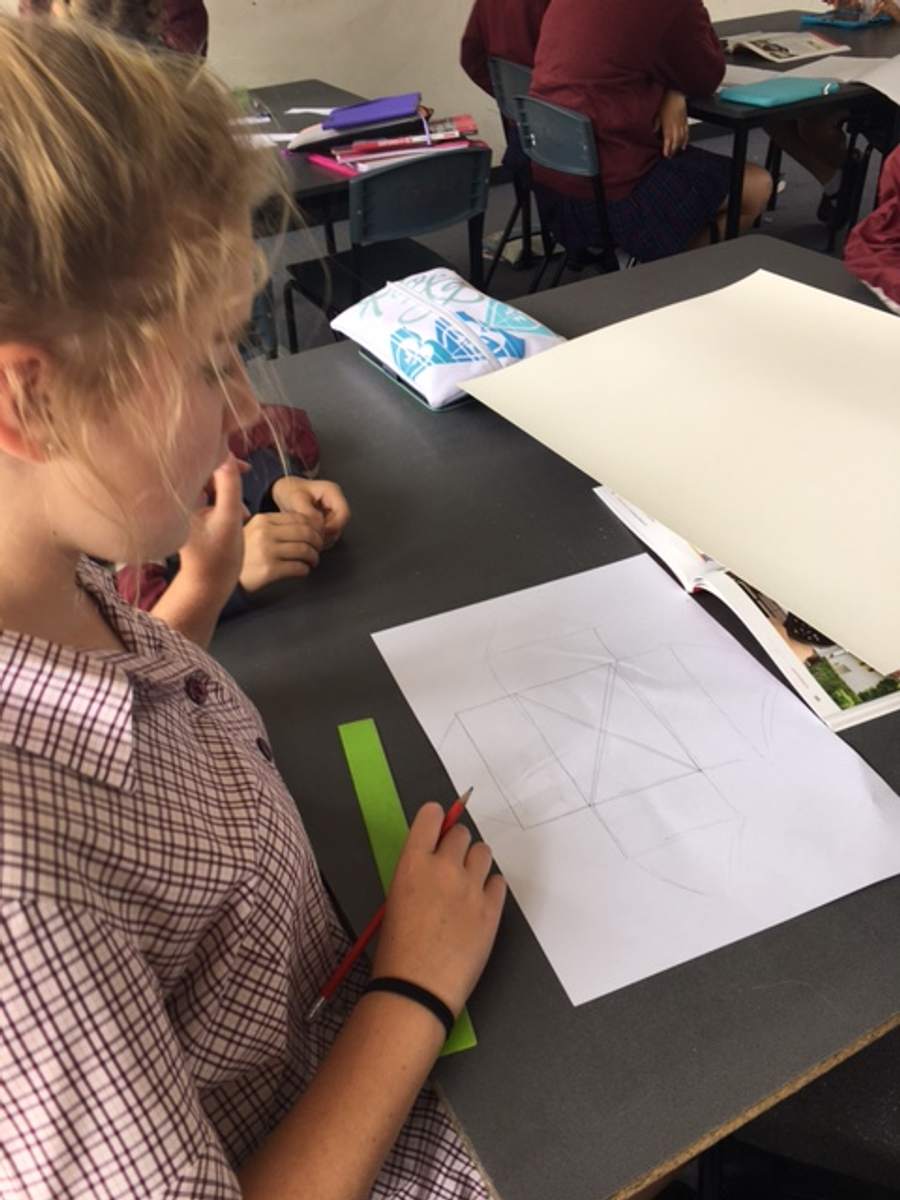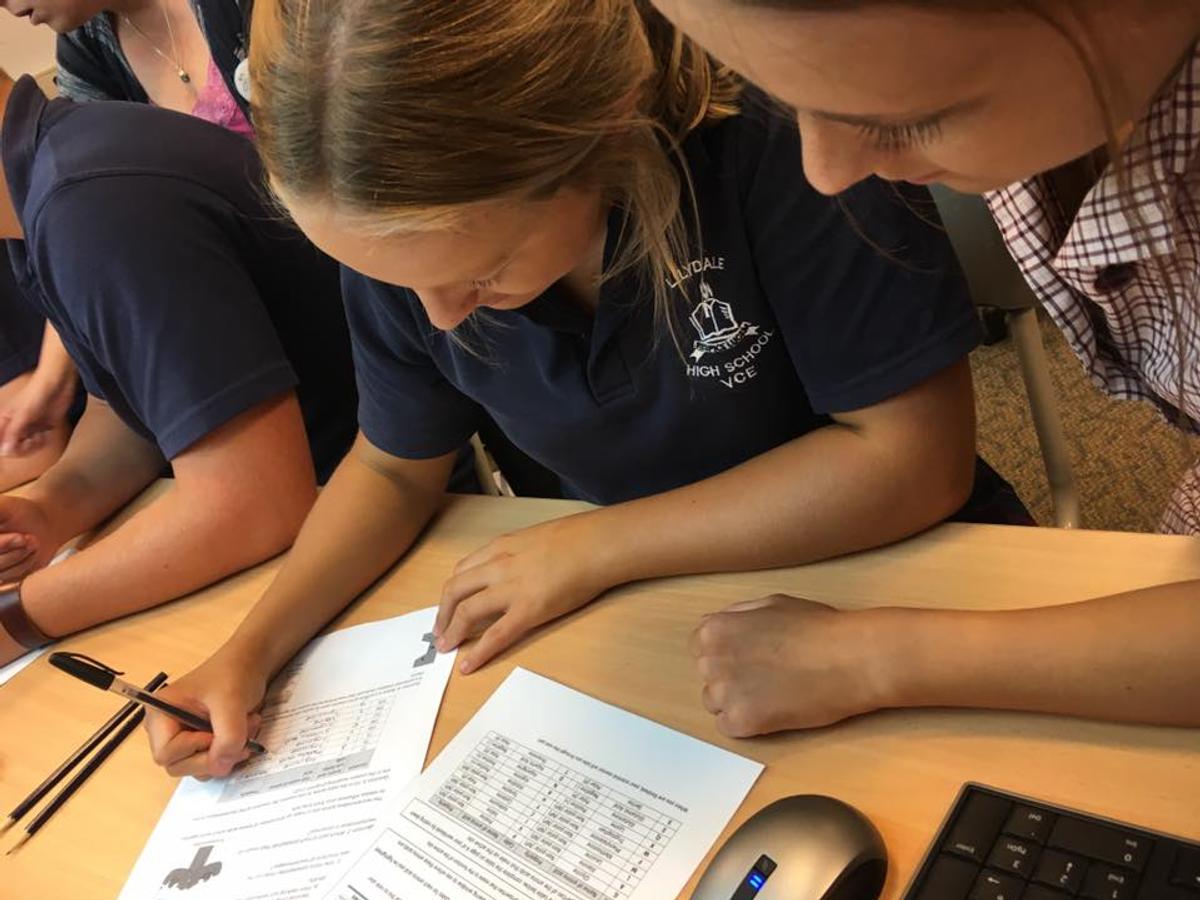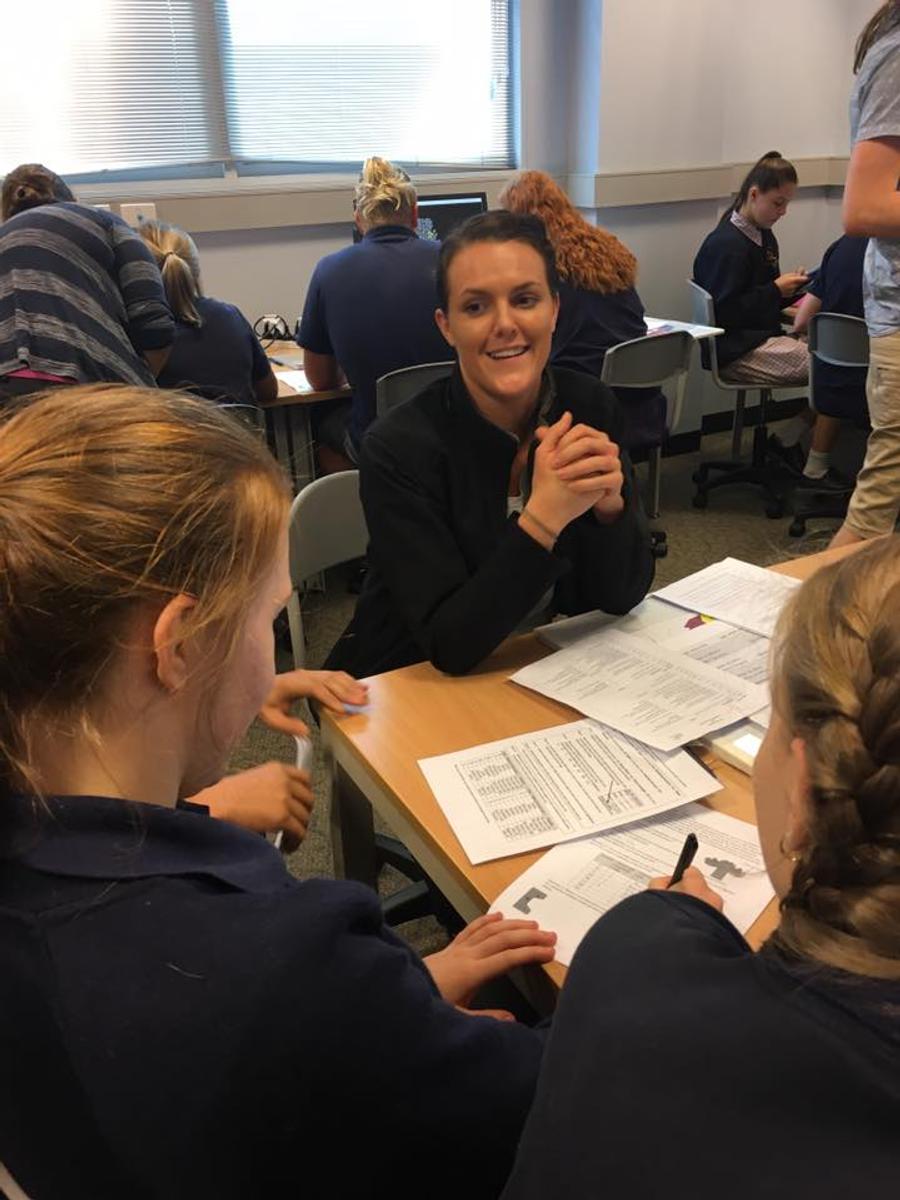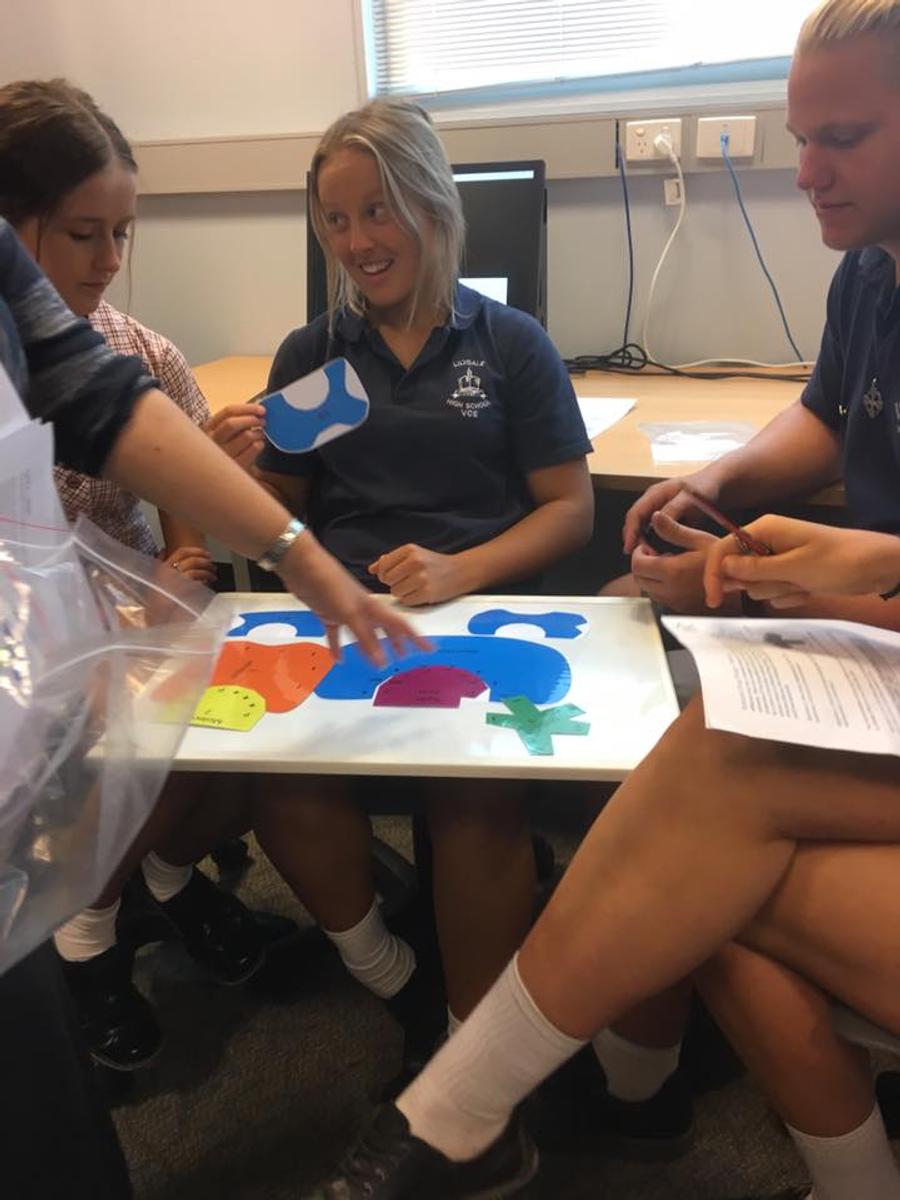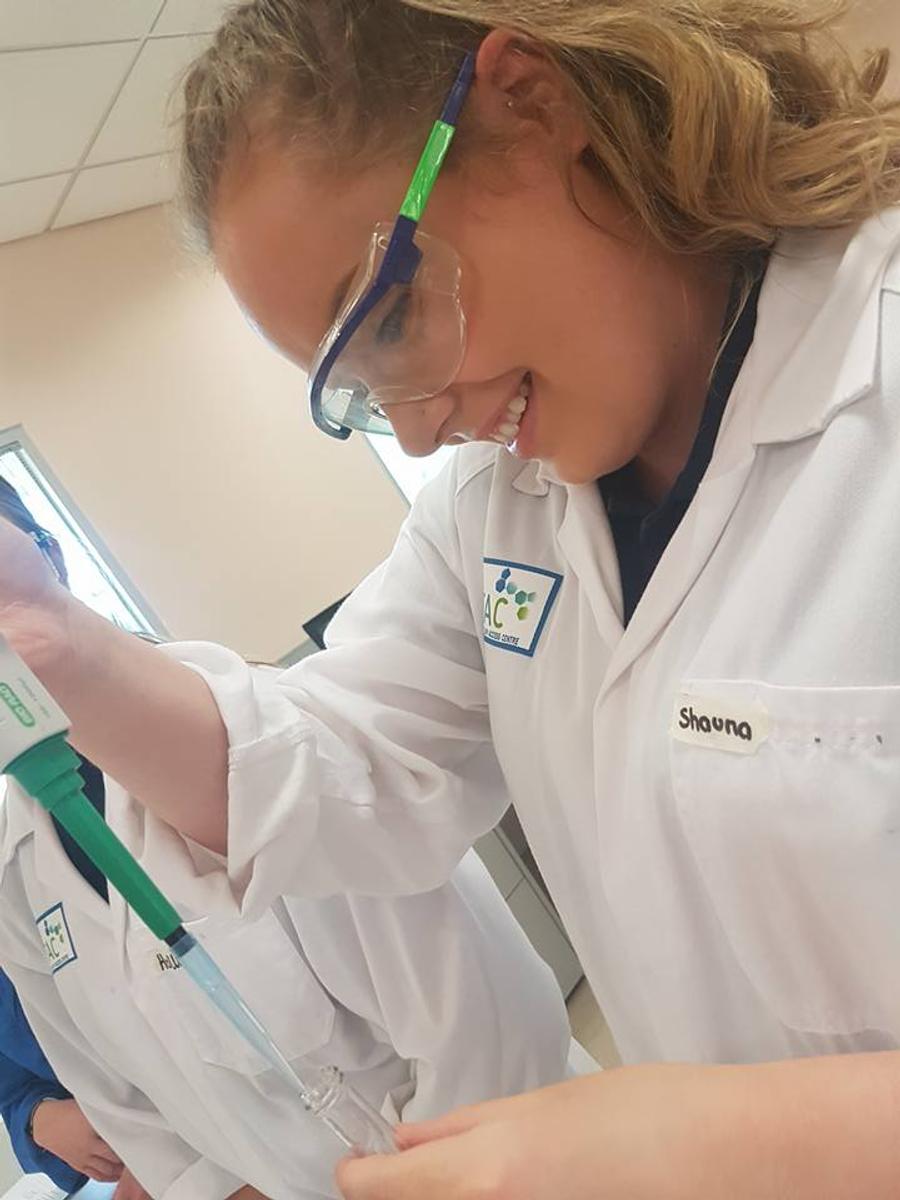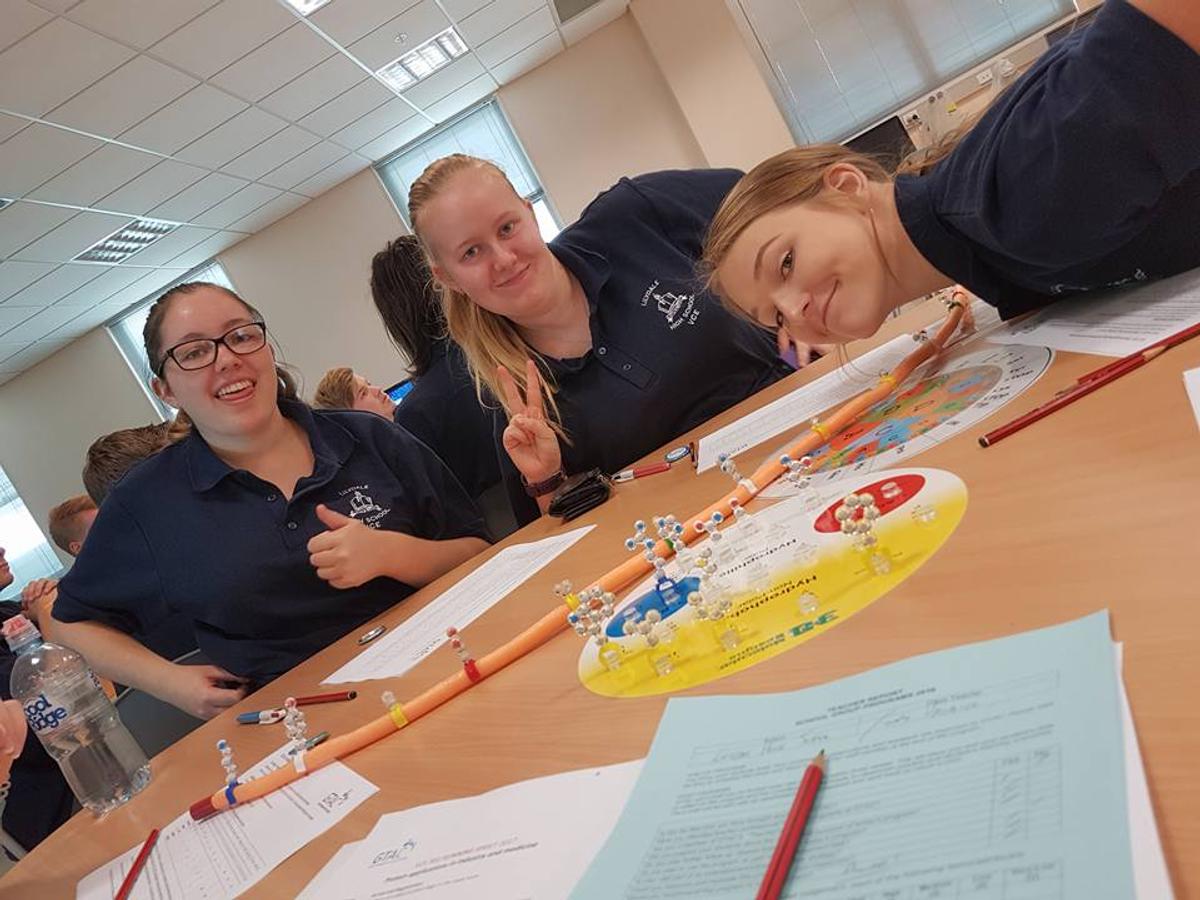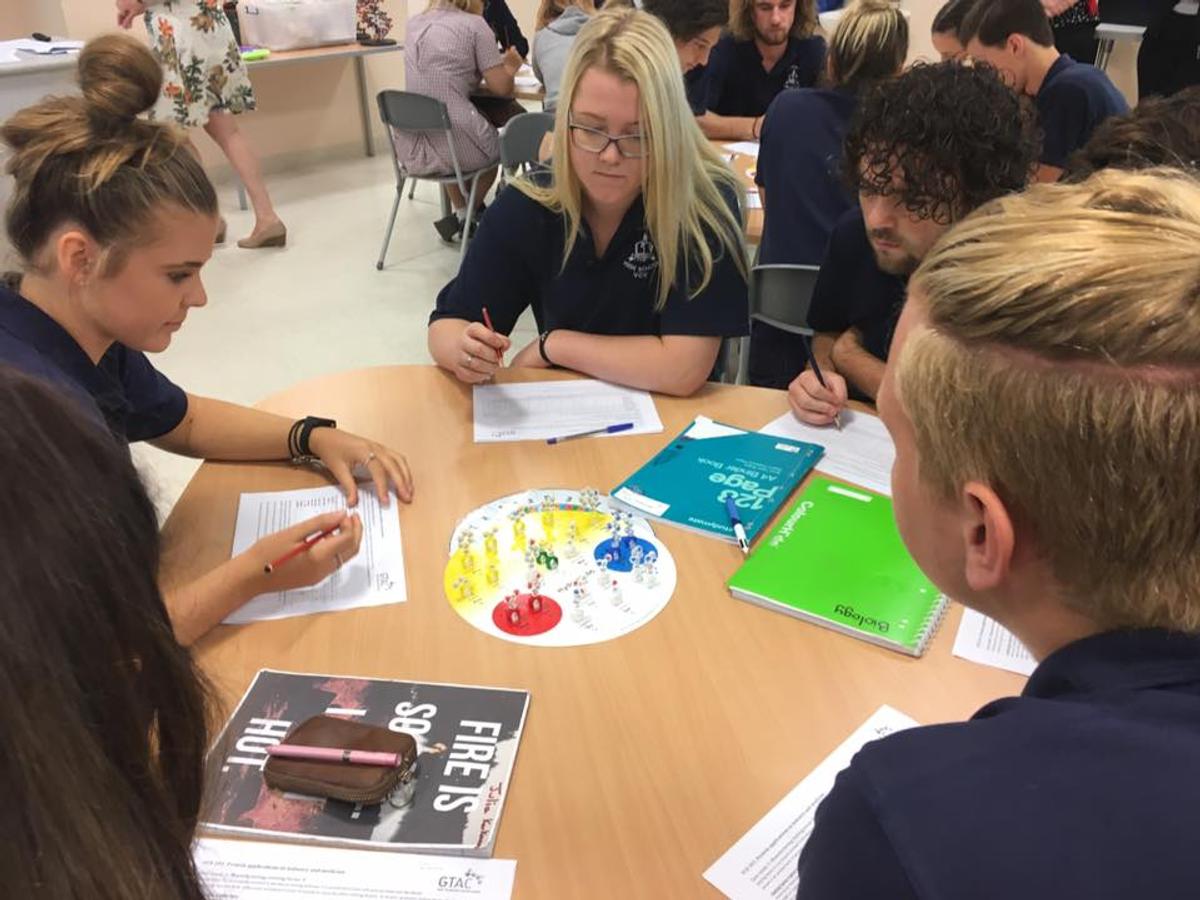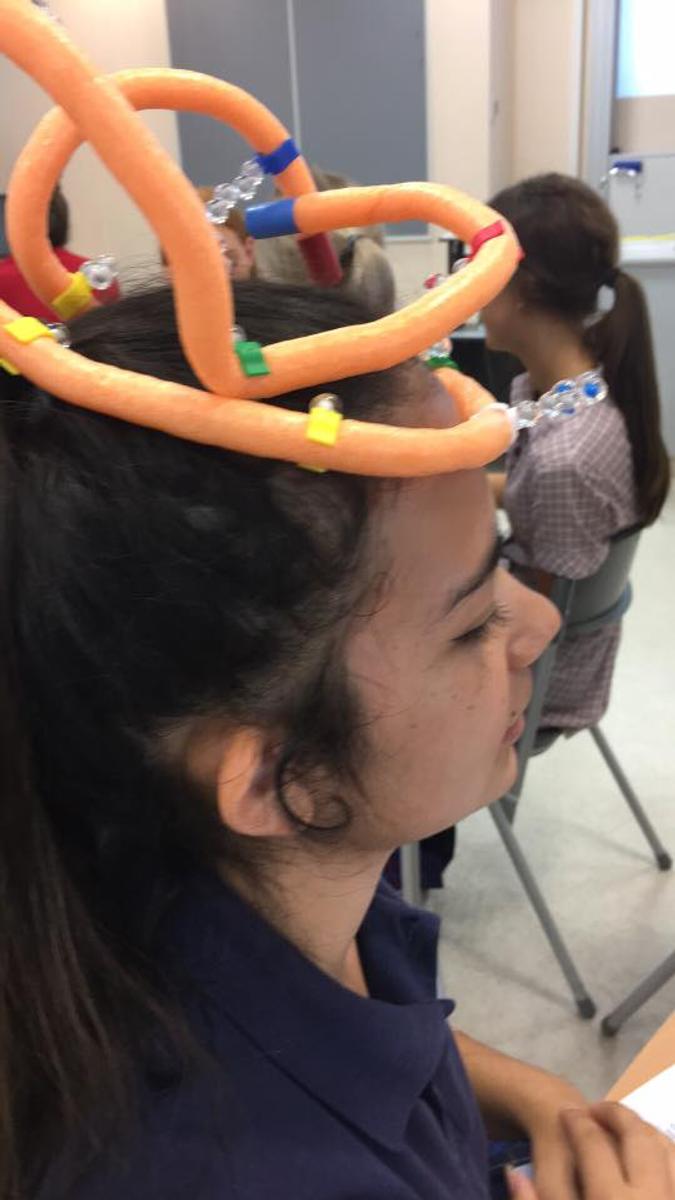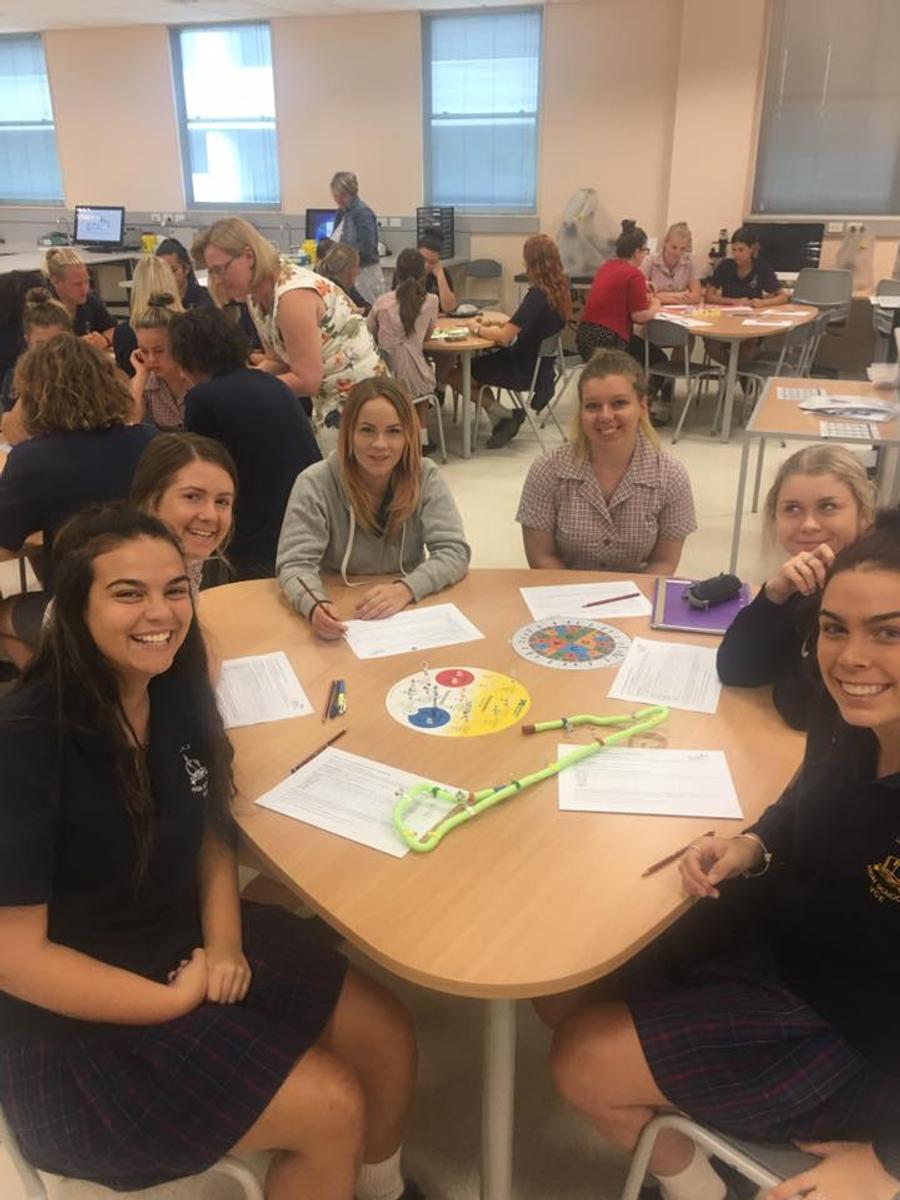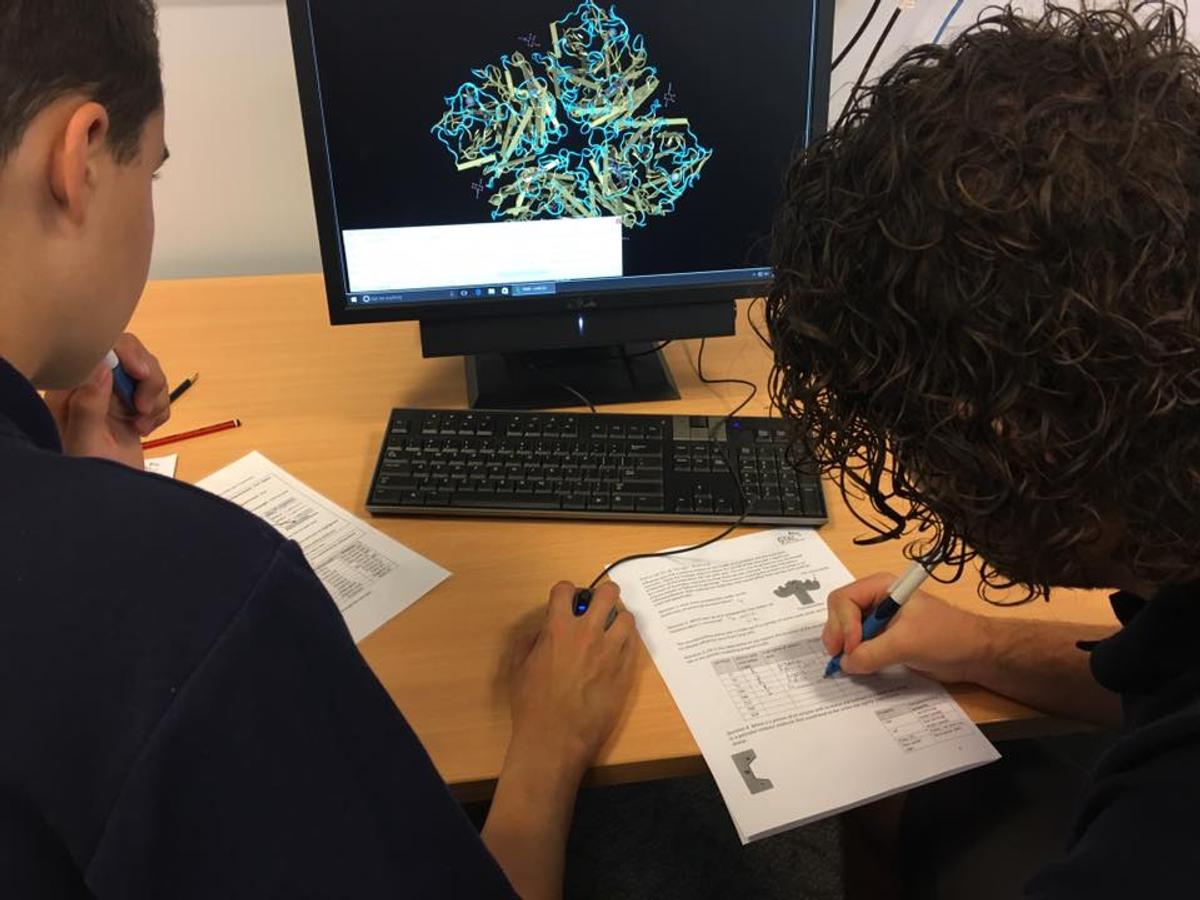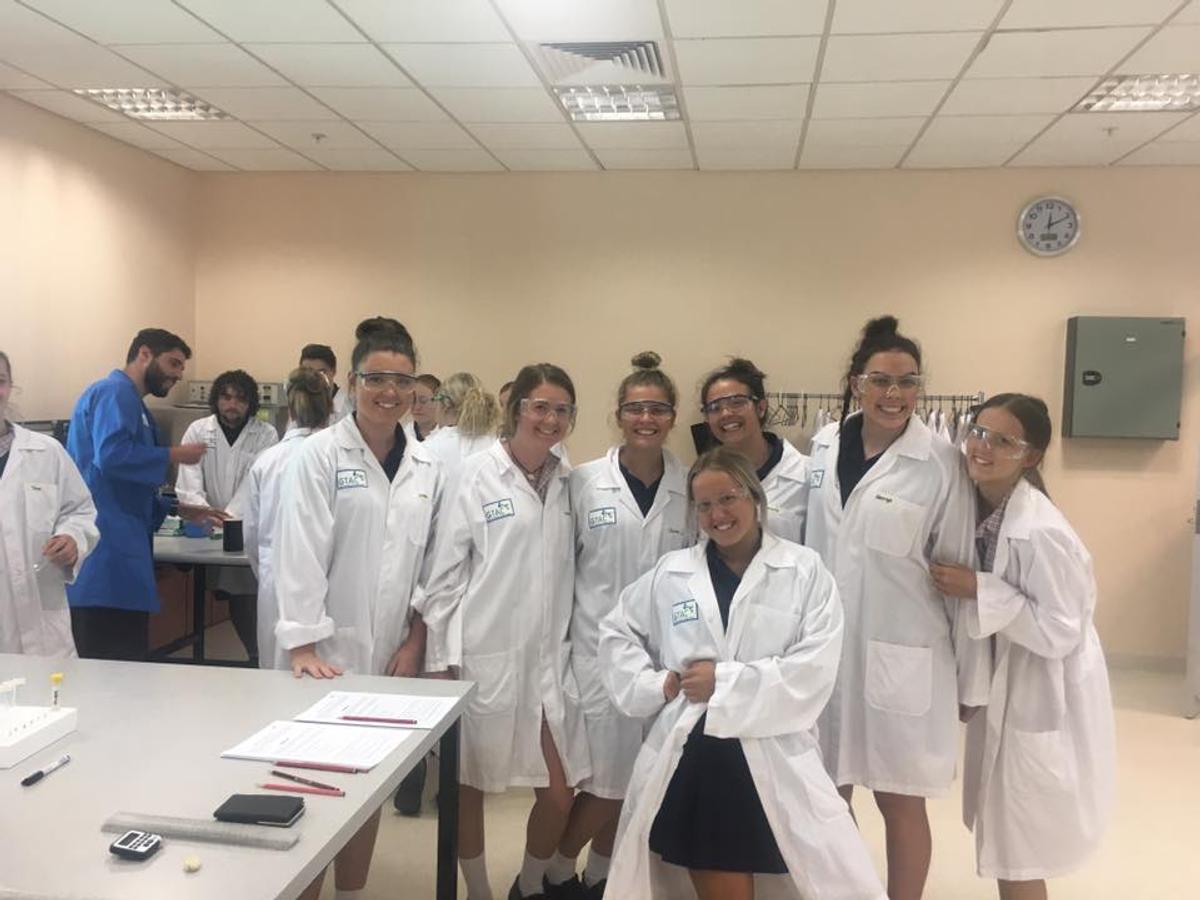SCIENCE
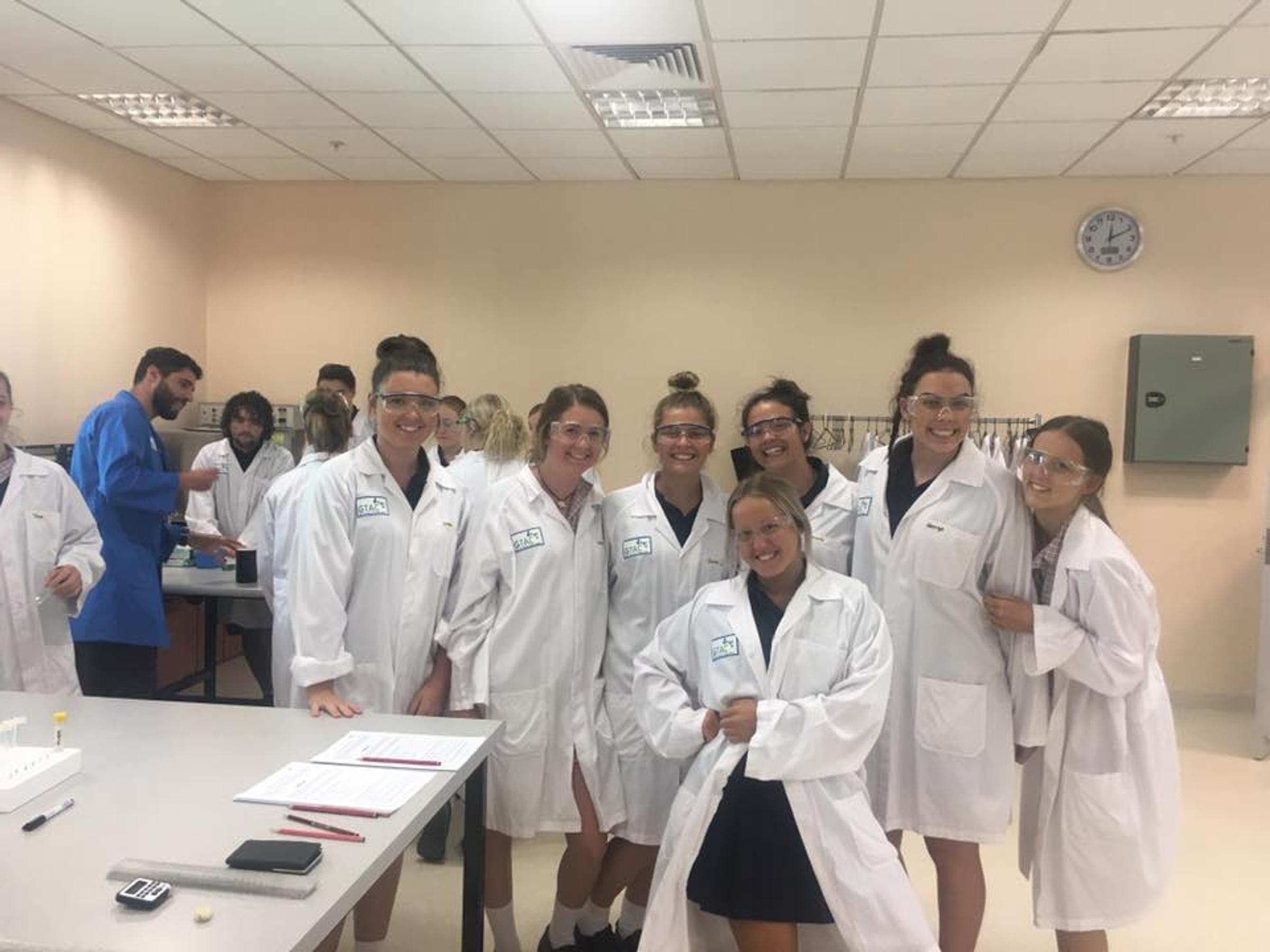
Science
I encounter many wondrous teaching moments as I walk through the school on my way to classroom. Last Tuesday, I noticed a group of VCE students standing in a circle and with a teacher in the middle talking to them. The teacher was Ms Asta and she was talking to her Unit 3 Psychology class. One student was blowing bubbles to model a neurotransmitter and the student to their left were the receptor molecule and they had to catch the bubble.
This is a very tricky concept, made into a fun and engaging activity for all learners to connect with and enjoy at the same time. You can see from the photos that the students own neurone pathways were firing.
Congratulations to Ms Asta for being so creative!
Julie Colyer
Marshmallow Catapults
Year 8 - Science Common Assessment Task (CAT)
Healthy competition was the aim of the day when Miss Van Hennik challenged my Year 8 Science class for a duel.
'Who could build the best catapult to fling a marshmallow further than ever before'.
Students were asked to build a machine from a mousetrap and other pieces of equipment, such as paper, tape, skewers, spoons and string. There was a friendly rivalry commencing through the morning until it was time for the ‘fling off’. The air was filled with angst, but all the students were given a prep talk by their teachers and reminded to play fair!
The first round was won by our group and a large 'huzzah' echoed through the school. The second round was won by Miss Van Hennik’s group and then it was a tussle - back and forward went the scores until the final fling. It was tense, everyone held their breath, but alas Miss Van Hennik’s class won by one point! It was very dramatic, but oh so much fun.
Here are some of the comments from my group 8.64 about the task. Congratulations Miss Van Hennik and 8.28. But we shall return!
“It was the funnest CAT in the World! Not only did we learn, we worked as a team and bonded with one another”. Lachy B
“This CAT was very fun and practical, I also loved the competitive aspect”. Jaycob
“This CAT was extremely different but in a good way, it allowed us to feel in control of this CAT by creating a design and trying to destroy our enemies (other Year 8’s)” Jack
“I think the CAT was one of the best CAT’s. The competitive factor really brought the CAT out and made it really fun”. Jaxon
“I thought that this CAT was quite fun, designing your own catapult to throw marshmallows, brilliant. It was a bit hard but once you get it to work, it’s really fun”. Jordyn R
“What I thought was that the CAT was fun and different from doing work all year, the Marshmallows catapult was a very good idea”. Livia
“What I thought about this CAT was that it was fun, competitive. I thinks it was great making the catapult and the awesome challenge trying to beat the other class flinging the marshmallow across the ground outside”. Jaz
“This was a really fun CAT and really different. I had a lot of fun and learned a lot about Energy”. Jemma
“I found this CAT fun and I liked working in groups”. Jade
Julie Colyer
Year 8 SEALP
Creating an Energy Efficient House
To extend their creativity and expand the potential of the Year 8 SEALP class. students were challenged to design a house that would keep cool.
Groups were formed chronologically and students began researching, planning and manually drawing up their houses.
Building came next, choosing an insulating material and finally testing their designs via experimentation to write up a report.
As you can see from the photos the students rose to the challenge and when the weather hit 37 degrees celsius, it was the perfect temperature to test their designs.
Congratulations 8.69A, I cannot wait to see what you come up with next.
Julie Colyer
GTAC
On Tuesday 28 February and Friday 3 March, all four groups of Unit 3 Biology descended upon the city to take part in the NEW programs to supplement the new study design in Biology this year.
They started off with models and mini activities in the inhibition of enzymes and how skin cancer can be so deadly; exploring the biochemistry of immortal cells.
After a short break the students set to work with an experiment about the effect of pH levels on an enzyme. Students had also looked at the other variable of temperature at school.
Just before lunch the students worked in the Bioinformatics lab learning about Drug design working with their PhD mentors and again using models to explore the complexity that enveloped before scientists found a vaccine for the influenza virus.
A wonderful day filled with experiments and useful knowledge to students to use for their School Assessed Coursework (SAC's) that will happen in Week 8.
Julie Colyer
Caitlin Armfield
Head of Science

